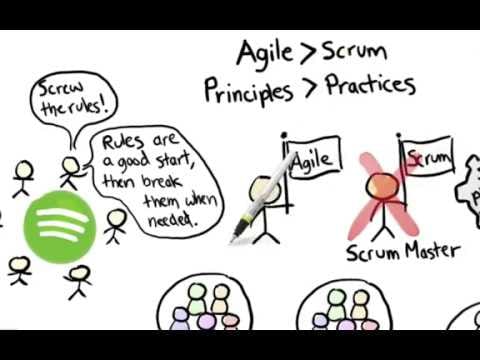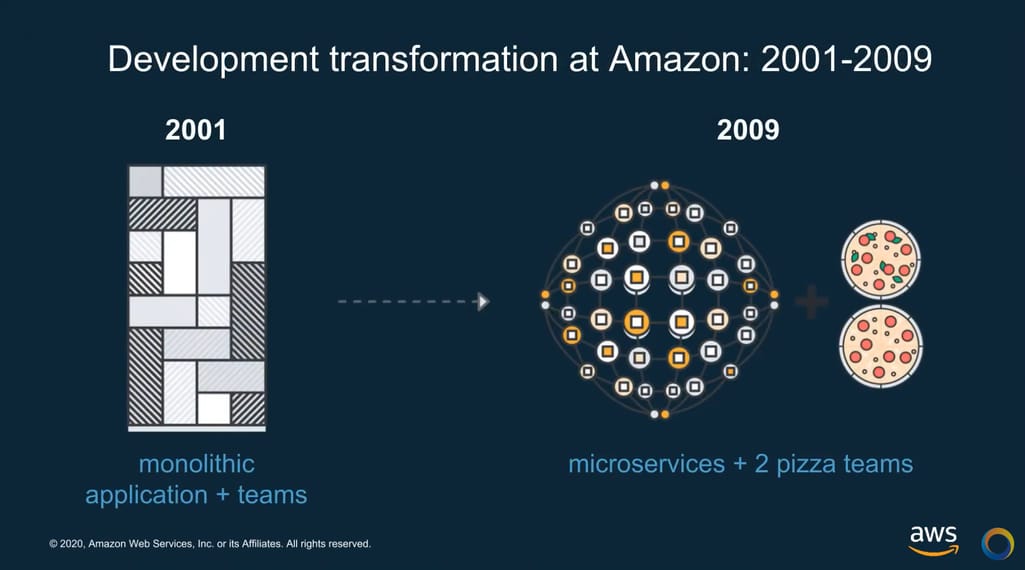Modern businesses have to operate in a rapidly changing environment, so more enterprises are turning to cross-functional teams to foster innovation and stay competitive in the market. According to Deloitte research of 2022, 83 percent of “digitally maturing” companies reported using cross-functional teams. However, building and managing effective cross-functional collaboration among employees can be challenging.
For this, companies need to carefully design their teams, set clear goals and processes, and cultivate the culture of mutual trust and communication between employees with different expertise.
In this post, we explore the concept of cross-functional teams in product development, discuss the benefits and challenges of running a cross-functional team, and give practical recommendations for building it. Whether you are a team lead, product manager, or a chief product officer, this article will give you the insights you need to leverage the power of cross-cultural collaboration in your company.
What is a сross-functional team?
A cross-functional team is a team composed of members from different departments in the organization that have diverse skills and professional expertise, but are working together to achieve a common goal. This form of collaboration becomes more widespread in the modern business environment as companies aim to leverage the benefits of diverse perspectives and experience of their employees.
Cross-functional teams are designed to break down the silos (organizational barriers that exist between different departments or team members) inside the company structure and foster collaboration.
The members of a cross-functional team are often chosen based on their skills and expertise necessary to contribute to the common results. Building a cross-functional team doesn’t mean the individuals in it must know everything; it rather means that such a team is fully capable of developing and supplying a complete product.
The concept of a cross-functional team appeared in contrast with a traditional, functional one. Let’s briefly discuss the main differences between them.
Functional teams vs cross-functional teams
Functional teams are composed of individuals with similar skills and professional expertise. This type of team is typically organized within a single department inside an organization. The example would be a marketing team, an accounting team, a developers’ team, etc. This makes a functional team highly specialized in one domain, but less flexible and inventive in decision-making.
How traditional and cross-functional teams are organized
The structure of a functional team is hierarchical with a clear reporting structure and a leader that monitors the team’s work.
Let’s say the marketing team has an idea about the upcoming product. Its members first work together, share their opinions, and when they come to a unified conclusion, they pass it to research and development, etc. The problem here is that, at the end, each team shifts its responsibility for the final product to other departments.
Well, cross-functional teams are designed to reduce such situations. Source: LinkedIn
Unlike functional teams, cross-functional teams are more flexible in their structure and the presence of a designated leader is not a must. Instead, members of a cross-functional team are given autonomy to make their decisions and equally contribute to achieving the final team’s goal.
A cross-functional team may consist of various specialists from IT, marketing, management, and other departments of the company. For example, in a cross-functional team that is working on a new product development, one member may be actually responsible for market research while the others work on coding, testing, and product implementation, etc. But eventually all team members have a shared understanding of the objective.
Cross-functional teams in Agile
Agile project management can be characterized by iterative development. This means the product development takes place in stages, where each further stage is an improvement over the previous one. As a result, every iteration brings an increment of a product that adds value.
So cross-functional teams play a critical role in Agile as the product increment has to undergo all the stages of development in a short period of time (e.g., a sprint). Therefore, it’s important to have experts with different skills. So the cross-functional team approach is a fundamental aspect of Agile project management. In practice, cross-functional teams often use Agile development methodologies like Scrum, Kanban, XP, etc.
For example, the UX designer may work closely with the developer to ensure the software’s interface is user-friendly. In the meantime, a developer can work with a QA engineer to identify and fix the bugs or issues that pop up during testing.
The technical writer creates technical documentation that describes the product’s functionality, usage, and so on. For this, the writer can closely cooperate with the product manager, developers, etc. In fact, there can be plenty of scenarios that vary depending on specific roles in the cross-functional team.
Cross-functional collaboration works well when everyone knows what to do. Source: Salestribe
Advantages of cross-functional teams
Building a cross-functional team in the company can be beneficial for your business and there are multiple reasons why. Below, we will mention just the most evident ones.
Diverse perspectives. Cross-functional teams bring together employees with different areas of expertise, which broadens perspectives and helps find out-of-the-box solutions.
Improved collaboration and communication. Working cross-functionally encourages team members to communicate better, which breaks down the silos inside the entire organization or some specific departments, and promotes a culture of cooperation and mutual trust.
Increased employee engagement. In a functional team, all individuals have more or less the same skills and backgrounds, which means they rarely have a chance to work on projects outside of their usual workload. So, if the product development takes a lot of time, everyday tasks can become more routine and employee engagement can decrease.
Shared sense of goals and responsibilities. The members of a cross-functional team work as one unit, so they have a clear understanding that if something goes wrong with the project, or if they receive negative feedback from the customers, it’s on their shoulders.
What makes the cross-functional team distinct from the traditional one is that in functional teams it’s easier for individuals to shift their responsibilities on colleagues from other departments.
Principles of a cross-functional team in product development
To help you successfully build a cross-functional team in your organization, we've prepared some key principles on combining individuals with diverse expertise to be part of product development team:
- Shared objectives. Cross-functional teams are always created with a specific objective in mind, so all team members are expected to share a common understanding of what kind of result should be finally achieved.
- Open feedback. This is a key standard of cross-functional teams. Openness to feedback and willingness to give and receive relevant recommendations and criticism is a must for all team members.
- Diverse expertise. All employees on such a team have diverse skills and expertise. This allows the team to address complex problems and come up with creative solutions, which is more challenging for a traditional type of team collaboration.
- Adaptability and flexibility. Cross-functional teams must be able to quickly adapt to changing circumstances and business environments so a deep understanding of the customer’s needs and preferences is required.
- Data-driven decision making. Such teams need to use data to inform and maintain their decision-making processes. This usually includes market trends and consumer behavior data collection, UX research, and its further analysis. A data-driven approach helps cross-functional teams develop those products that are tailored to the needs of the customers.
Now let’s have a look at the most common roles in a cross-functional team. For sure, this list is not comprehensive and the quantity and specific roles can vary depending on the project’s goals and aims that the particular cross-functional team wants to achieve at the end.
The roles in a cross-functional product development team
In this section, we’ll address some key roles that might be present in a cross-functional product development team. We will focus on software development so the roles will be chosen correspondingly.
Here are some typical roles inside a cross-functional team
Product manager. This specialist is responsible for leading the development of the product from ideation to release. Product manager duties usually depend on the needs of the team and the nature of the project; however, there are some common tasks.
First, the product manager comes up with a clear vision of the product and defines the product strategy and product roadmap of how it should be developed and launched. By the way, we have a video dedicated to product roadmap:


Explore the concept of product roadmap in 8 minutes
Second, a PM is responsible for backlog management (check our article on backlog grooming). Product managers work with developers, designers, and other specialists on a cross-functional team to make sure the final product is developed according to the initial vision.
Software engineer. The role of a developer as a member of a cross-functional team is to furnish technical expertise. As a rule, a software engineer uses coding skills to develop and design software solutions that meet the project’s requirements. In addition, this specialist works with the rest of the team to understand the customer’s needs and analyze the business requirements.
Quality assurance engineer. A QA engineer usually collaborates with a product manager to make sure all the quality standards are met throughout the product life cycle. QAs usually develop and execute test plans, review project deliverables, and, as a result, provide comprehensive feedback on quality issues to the rest of team members. They also have to ensure quality control measurements and procedures.
UX/UI Designer. UX/UI designer is an individual responsible for two major aspects of design: user interface (an aesthetic and visual representation of a product) and user experience (how to make the product convenient and help users navigate it in the most productive way). The UI visual (UI) aspect of design entails working with style guides, colors, spacing, fonts, and so on. The user experience (UX) aspect is focused on user flow and its efficiency. A UX designer’s tools are graphs, wireframes, clickable prototypes, and analytic instruments.
Depending on its task, a team can also include a graphic designer, motion designer, and many more.
Marketing specialist. As a part of a cross-functional team, a marketing specialist develops marketing strategies and plans that align with the team’s objective. Also, this professional conducts market research to better understand customer behavior and preferences.
Business analyst. This professional is responsible for analyzing business requirements and defining the scope of the project. Within the cross-functional team, a business analyst works closely with stakeholders to understand their needs and further interpret them into actionable project requirements.
When present, this role stands as a mediator between business and technical teams, so it’s vital for ensuring all requirements are clearly communicated and well-received by all parties involved. Also, a business analyst searches for opportunities to improve the processes and systems needed for the product development.
How to build a strong cross-functional team
Let’s look at key recommendations and strategies for building a strong cross-functional team.
Set clear project goals and objectives for the team. Before bringing up the specialists altogether in a cross-functional team, you have to define project goals as it will further help you ensure the team is aligned around a common vision and product value.
Identify the roles that have to be filled. For this, you should understand what kind of skills and expertise will be required. For instance, if we talk about development of a software product, including a developer and a QA specialist is a must. However, don’t disregard nontechnical roles and their importance. A marketing specialist can help you analyze the latest market trends and write the strategy that would suit your product in particular.
Foster open communication among all team members. Clear communication is critical when working on a cross-functional team. Team members need enough encouragement to openly share their ideas; they shouldn’t hesitate to ask questions and provide feedback when it’s required. For this, it’s important to conduct retrospective meetings after each sprint that target feedback and open communication among the employees.
Adopt the most appropriate leadership type. While strong leadership isn’t always essential for making a cross-functional team work, it’s still important to consider the leadership approach. The team lead must be experienced in managing this type of team collaboration and have a clear vision of the aims the team wants to achieve. A team lead must model the behavior and values that will help all members build trust, transparency, honesty, and respect with their collaboration and working process.
AdoptDevOps practices. According to DevOps practice, you have to avoid manual work as much as possible. So automating development, testing, and configuration processes is a must. You should use DevOps tools that will allow the specialists to get rid of time-consuming, mundane tasks and concentrate on more important activities that are not automated and require intervention.
Establish a shared understanding of the technology stack and tools. For this, a team lead or a product manager should first recognize the technology stack and toolset that lies in the foundation of the project. Then, each team member has to understand how their role fits the overall technology stack. For instance, software engineers need to make sure their code is ready to interact with other layers of the entire technology stack.
Cross-functional team real-life examples
Cross-functional teams have become increasingly popular at many tech giants like Amazon, Spotify, Facebook, and so on. Let’s view how some of them managed to achieve this.
Spotify Squads
One of the most well-known examples of cross-functional teams in product development is the one offered by world-leading music streaming platform Spotify. The company defines their cross-functional teams as squads. The concept behind this model is to bring employees together in autonomous teams and provide them with a clear mission and measurable goals.
Typically, a squad consists of 5 to10 individuals, including developers, product managers, designers, and other related specialists. All of them are responsible for developing an end-to-end product, from ideation to deployment. Several squads are grouped into larger units called tribes that are usually focused on a specific area of the business, like a backend infrastructure, music player, etc. The tribes are further organized into chapters and guilds. Tribes shouldn’t consist of more than 100 individuals.
Already overwhelmed? Let’s see how it works schematically:
A tribe is a collection of squads that work in related areas. Source: Spotify Scaling
Squads. A squad is the basic unit of development in Spotify’s organizational structure. As a rule, it’s a cross-functional team of 5-10 people who have a clear mission or purpose in the project they work on. Each squad has a leader responsible for coordinating the team work and ensuring everyone understands the goal and mission of the team and the project.
Tribes. This unit consists of 30-50 people working together on related product development projects. Tribes consist of several squads, and each tribe has a tribe lead to manage coordination of the squads' work. Tribes are designed to foster collaboration and sense of community between employees working on similar projects.
Chapters. These are the groups of employees who share a common area of expertise, regardless of the squad they belong to. For instance, one chapter can consist of software engineers or designers. There can be chapters for data science, product design, etc. The main chapter mission is to promote the sharing of knowledge between peers. Working in chapters helps individuals grow professionally inside their company, as they can learn from their colleagues and develop new skills.
Guilds. These are the groups of employees who share a common interest or passion, regardless of their role or department. Guilds are designed to select and bring together employees who share enthusiasm for different topics like machine learning, agile development, UX design, and many more. Guilds are less formal than chapters and are organized around a specific theme, rather than an area of expertise. This Spotify unit helps the company create a culture of learning, collaboration, and continuous improvement. As the guild employees are gathered according to their passions and interests, rather than expertise or specific role, they can find more innovative ways and approaches to problem-solving.


Get to know more about the Spotify engineering culture. Source: Spotify Engineering
Let’s move to another shining example of a cross-functional product development team -- Amazon’s Two-Pizza Teams model.
Amazon’s Two-Pizza Teams
The idea behind Amazon’s Two-Pizza teams is to keep the team size small enough so that it can be fed with no more than two pizzas. Typically, such a team consists of 5 to 7 members. The main goal of this model is to encourage more decentralized decision-making and make cross-functional teams move quicker and more independently through the entire development cycle.
The company’s executives believe excessive communication is a sign of dysfunctional management. Jeff Bezos, CEO of Amazon, proposed transforming the company teams into decentralized ones and providing each of them with full ownership and full accountability of their projects. So instead of trying to multitask or work simultaneously on multiple projects at once, each team should concentrate on a single one at a time.
The quality, not the quantity, agree? Source: LinkedIn
As a result, Amazon reported achieving greater agility after they embraced DevOps philosophy and brought the two-pizza team concept to life. The teams started releasing products faster than ever, though, for sure, there remained some areas for improvement.
Here are some products that were developed with the help of Two-Pizza teams:
- Amazon Prime. The subscription-based service that offers access to streaming music, video content, and other benefits was developed by a small team of eight engineers. Their work resulted in the globally successful Amazon Prime as we know it today.
- Amazon Web Services (AWS). Amazon's world-famous cloud computing service was intoduced by a small, dedicated cross-functional team of specialists who worked as a part of Amazon’s infrastructure group in 2003.
- Alexa. This popular voice-activated digital assistant was initiated by a small team as a part of Amazon’s Lab126 hardware division.
Amazon’s two-pizza team model proved to be successful, but it certainly had some drawbacks and challenging aspects. There are, for example, some employees who criticized the model for putting too much pressure on small teams which, as a result, created a highly competitive environment between co-workers.
How Amazon development transformed towards cross-functionality. Source: SlideShare
It would be wrong to call cross-functional teams a panacea that should be a part of every evolving business. For sure, the concept is great and many companies are successfully adopting it today; however, in practice, this form of collaboration works the best for specific scenarios.
When a business needs a cross-functional team
Below, we propose some cases when building cross-functional teams can help your business grow. There are many more of them, and here a lot will depend on the goals of the project in a product development process.
When you have large-scale enterprise software projects. In this case, a lot of departments should be involved in product development, so bringing together individuals from diverse professional areas can fit the final goal and business strategy of such a project. For instance, you have to create a team for software product development, and testing is inevitable. With the help of a cross-functional team, you can test different parts of the project simultaneously in various divisions of your business.
When collecting and validating project requirements is a challenge. Cross-functional teams for such scenarios can include, for example, different roles from marketing, product management, and IT departments. Each of the representatives will perform their corresponding tasks. A marketing specialist will be in charge of analyzing how to attract potential customers, a product manager will take care of discovering customer pain points, and a software engineer will work on the technical implementation of the final product.
When a specific project requires complex budgeting. Let’s say you are going to launch a new project and feel that the budgeting issues might be challenging. You can create a team that includes a product manager, a specialist from the financial department, and the head of marketing to analyze and discuss the costs that must be involved in launching this new product. The diverse expertise enables all team members to come up with the best solution and eliminate dependencies between the coworkers.

